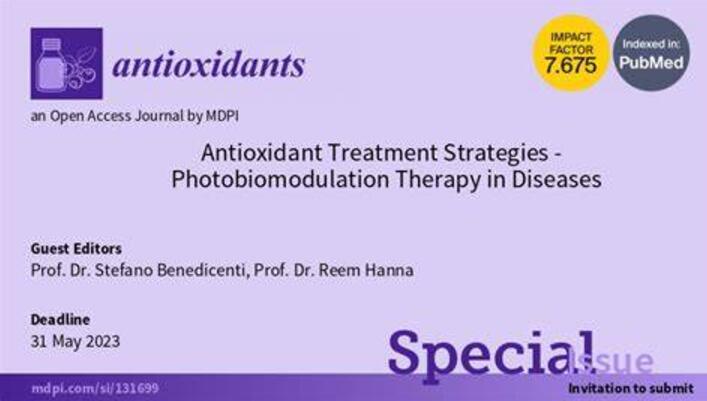硒摄入过量或不足都会损害大鼠的上气道肌肉功能
IF 6.6
2区 医学
Q1 BIOCHEMISTRY & MOLECULAR BIOLOGY
引用次数: 0
摘要
阻塞性睡眠呼吸暂停(OSA)涉及上气道肌肉功能受损,与多种病症有关,包括全身性高血压、日间嗜睡和认知能力下降。硒是一种必需的微量营养素,它通过硒蛋白发挥许多作用。有证据表明,饮食中硒摄入不足或过量都会导致肌肉功能受损,即营养性肌病。为了研究硒对上气道肌肉(胸骨肌)的影响,用含硒不足、正常(0.5 ppm 亚硒酸钠)或过量(5 ppm 亚硒酸钠)的食物喂养大鼠两周。在体外对硬膜收缩功能进行了评估。血清硒水平和谷胱甘肽抗氧化系统的活性是通过生化试验测定的。通过免疫印迹法对胸膜肌肉中三种关键肌肉硒蛋白(硒蛋白-N、-S和-W(SELENON、SELENOS和SELENOW))的丰度进行了量化。还比较了暴露于慢性间歇性缺氧(一种 OSA 模型)的大鼠与假治疗动物之间这些硒蛋白的水平。缺硒或过硒饮食虽然对所选器官质量和全身重量没有检测到影响,但却严重损害了胸膜收缩功能。这些变化并不涉及纤维大小分布的改变。这些膳食干预导致血清硒浓度发生相应变化,但并未改变胸腺肌肉中依赖谷胱甘肽的抗氧化系统的活性。过量的膳食硒增加了胸锁乳突肌中SELENOW蛋白的丰度,但对SELENON或SELENOS没有影响。相反,长期间歇性缺氧会增加胸锁乳突肌中的SELENON,降低SELENOW,但对SELENOS没有显著影响。这些研究结果表明,暴露于缺硒或过硒饮食中两周,上气道肌肉功能会受到严重损害。在胸膜肌肉中,SELENON、SELENOS 和 SELENOW 蛋白在暴露于不同的膳食硒摄入量或慢性间歇性缺氧后会出现不同程度的改变。了解硒和硒蛋白的变化如何影响胸锁乳突肌的功能,有可能转化为预防或治疗 OSA 的新疗法。本文章由计算机程序翻译,如有差异,请以英文原文为准。
Impaired Upper Airway Muscle Function with Excessive or Deficient Dietary Intake of Selenium in Rats
Obstructive sleep apnoea (OSA) involves impaired upper airway muscle function and is linked to several pathologies including systemic hypertension, daytime somnolence and cognitive decline. Selenium is an essential micronutrient that exerts many of its effects through selenoproteins. Evidence indicates that either deficient or excessive dietary selenium intake can result in impaired muscle function, termed nutritional myopathy. To investigate the effects of selenium on an upper airway muscle, the sternohyoid, rats were fed on diets containing deficient, normal (0.5 ppm sodium selenite) or excessive (5 ppm selenite) selenium for a period of two weeks. Sternohyoid contractile function was assessed ex vivo. Serum selenium levels and activity of the glutathione antioxidant system were determined by biochemical assays. The abundance of three key muscle selenoproteins (selenoproteins -N, -S and -W (SELENON, SELENOS and SELENOW)) in sternohyoid muscle were quantified by immunoblotting. Levels of these selenoproteins were also compared between rats exposed to chronic intermittent hypoxia, a model of OSA, and sham treated animals. Although having no detectable effect on selected organ masses and whole-body weight, either selenium-deficient or -excessive diets severely impaired sternohyoid contractile function. These changes did not involve altered fibre size distribution. These dietary interventions resulted in corresponding changes in serum selenium concentrations but did not alter the activity of glutathione-dependent antioxidant systems in sternohyoid muscle. Excess dietary selenium increased the abundance of SELENOW protein in sternohyoid muscles but had no effect on SELENON or SELENOS. In contrast, chronic intermittent hypoxia increased SELENON, decreased SELENOW and had no significant effect on SELENOS in sternohyoid muscle. These findings indicate that two-week exposure to selenium-deficient or -excessive diets drastically impaired upper airway muscle function. In the sternohyoid, SELENON, SELENOS and SELENOW proteins show distinct alterations in level following exposure to different dietary selenium intakes, or to chronic intermittent hypoxia. Understanding how alterations in Se and selenoproteins impact sternohyoid muscle function has the potential to be translated into new therapies for prevention or treatment of OSA.
求助全文
通过发布文献求助,成功后即可免费获取论文全文。
去求助
来源期刊

Antioxidants
Biochemistry, Genetics and Molecular Biology-Physiology
CiteScore
10.60
自引率
11.40%
发文量
2123
审稿时长
16.3 days
期刊介绍:
Antioxidants (ISSN 2076-3921), provides an advanced forum for studies related to the science and technology of antioxidants. It publishes research papers, reviews and communications. Our aim is to encourage scientists to publish their experimental and theoretical results in as much detail as possible. There is no restriction on the length of the papers. The full experimental details must be provided so that the results can be reproduced. Electronic files and software regarding the full details of the calculation or experimental procedure, if unable to be published in a normal way, can be deposited as supplementary electronic material.
 求助内容:
求助内容: 应助结果提醒方式:
应助结果提醒方式:


